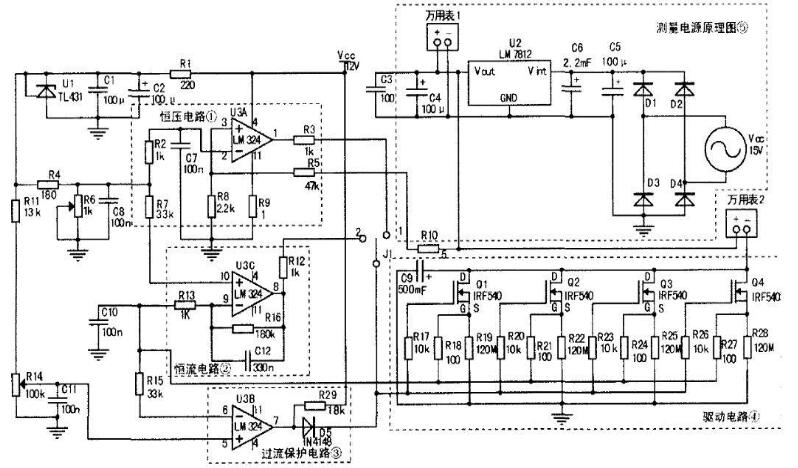The electronic dummy load serves as a modern alternative to traditional load resistance boxes and sliding line varistors, particularly excelling in scenarios where constant current or constant voltage settings are required—something conventional varistors cannot easily achieve. It is widely used for testing the output characteristics of various power devices such as generators, AC/DC and DC/DC converters, uninterruptible power supplies (UPS), dry batteries, batteries, transformers, and chargers. This device can handle a maximum dummy load power of up to 600W, with adjustable resistance ranging from 30mΩ to 14.352kΩ, offering high flexibility and precision.
**First, the basic idea**
When designing an electronic dummy load, it's common to use FETs or IGBTs because they require low control power. However, it’s crucial to ensure that these components have sufficient power margin at full load to prevent damage during operation. Since the dummy load generates a significant amount of heat, a proper heat sink must be used, and the thermal resistance between the power device and the heat sink should be minimized. In some cases, a cooling fan may also be necessary. Another critical consideration is the risk of parasitic self-oscillation in power devices, which can cause instability and even lead to component failure. Therefore, anti-parasitic oscillation measures are essential for the successful design of an electronic dummy load.
The circuit typically starts by generating a reference voltage that is sent to three operational amplifiers. These op-amps help implement the core functions of the dummy load: constant voltage and constant current. A general principle block diagram is shown in Figure 1.

Figure 1: Block Diagram
**Second, the circuit principle** The schematic is illustrated in Figure 2. The main circuit, excluding the dotted-line frame 5 and the two multimeters, includes a constant voltage circuit, a constant current circuit, an overcurrent protection circuit, and a drive circuit. The input voltage is 12V, which passes through a current-limiting resistor R1 to the cathode K of the three-terminal adjustable shunt reference source U1 (TL431). The reference voltage VR from the reference terminal R is 2.5V, and this value is adjusted using a variable resistor R6 connected through R1. One path provides voltage for U3A via R2, while another path supplies voltage for U3C through R7.
Multifunction Cutting Machine,Cutting Machine Pipe,Plastic Cutting Machine,Metal Cutting Machine
Kunshan Bolun Automation Equipment Co., Ltd , https://www.bolunmachinery.com